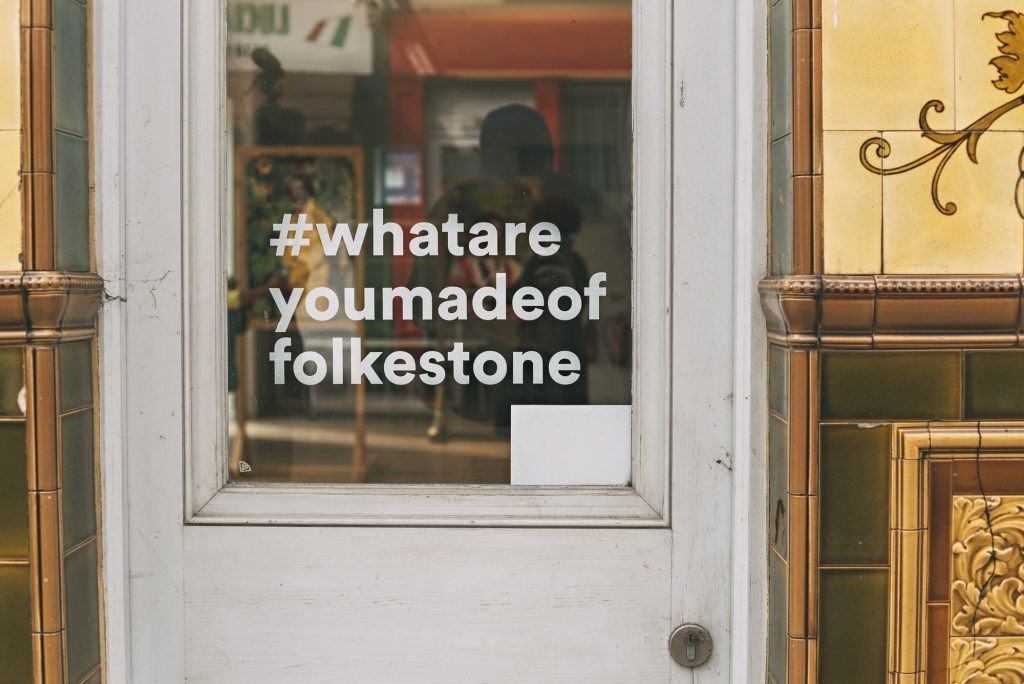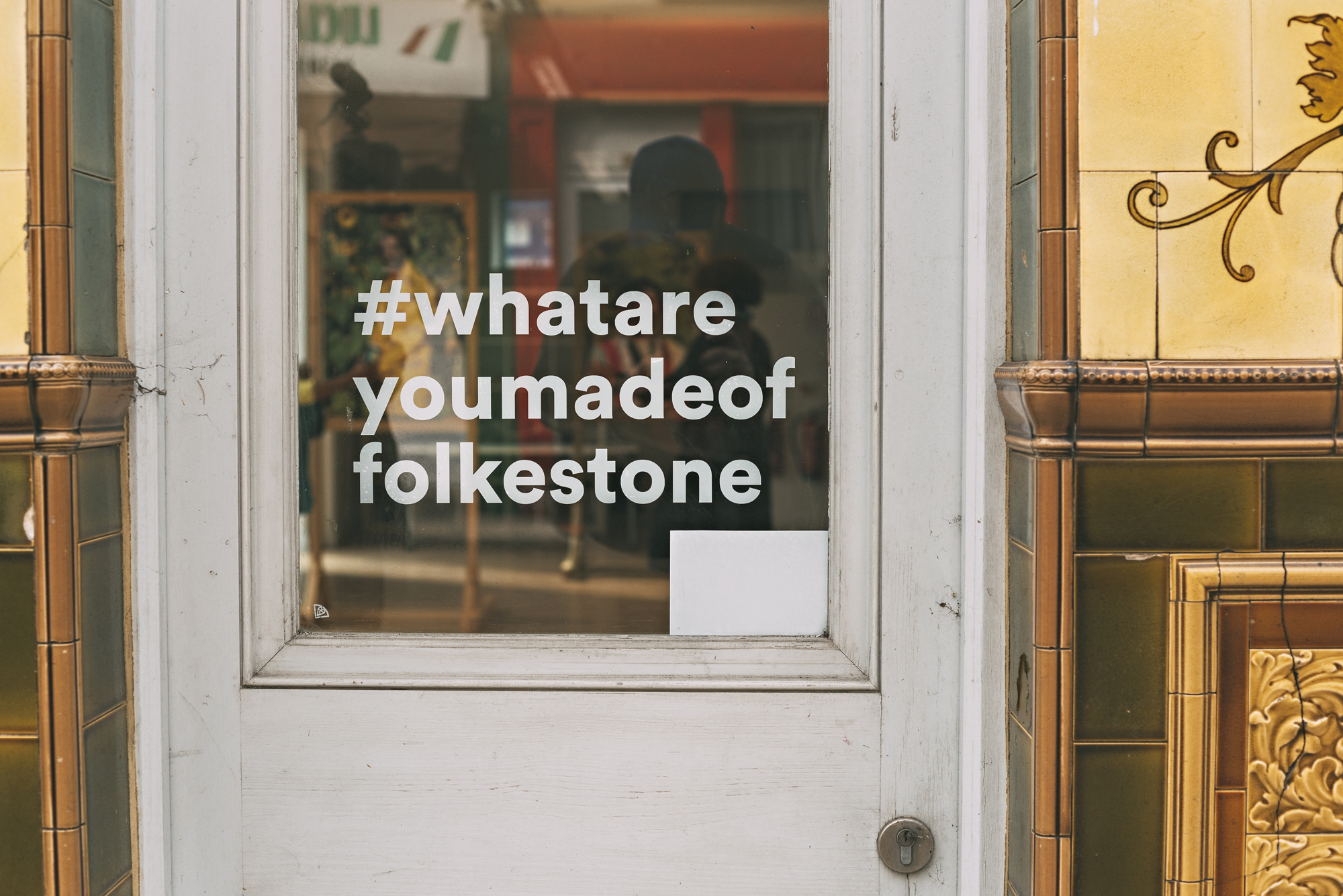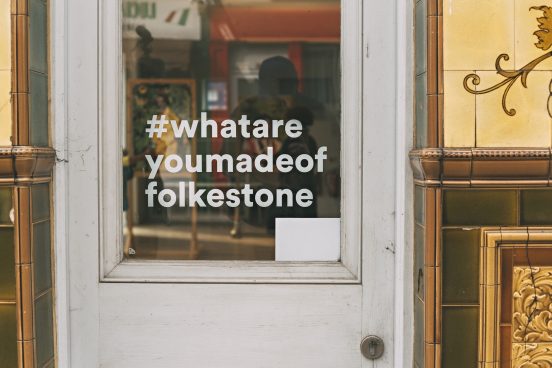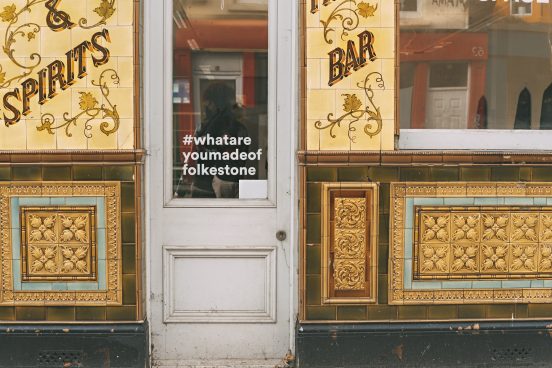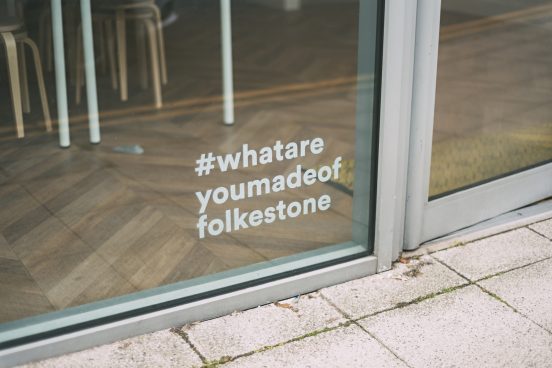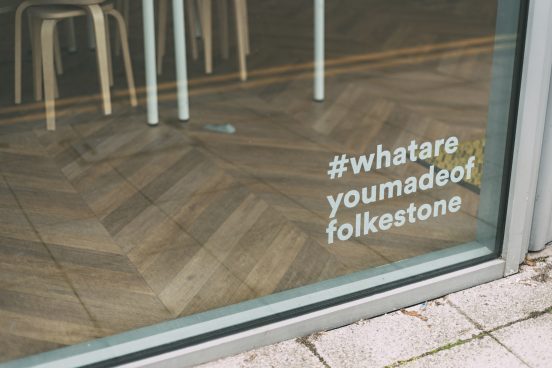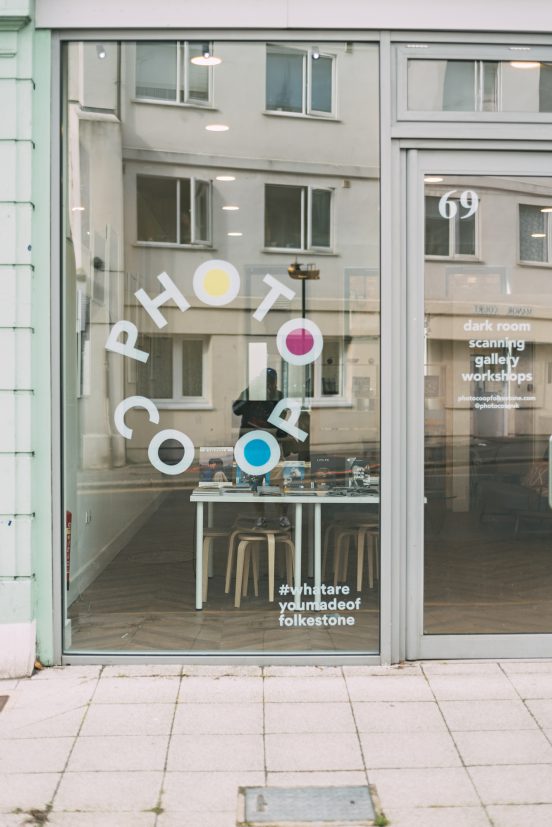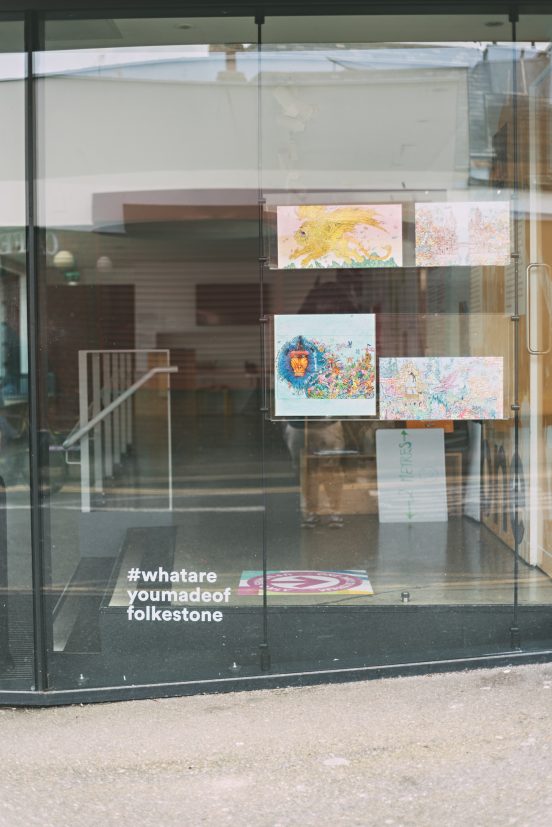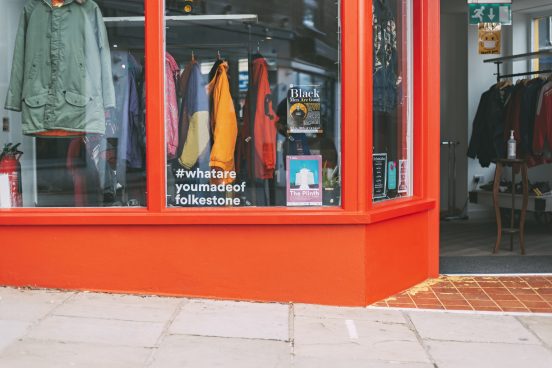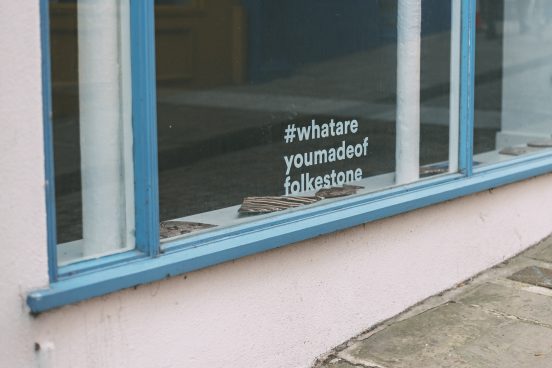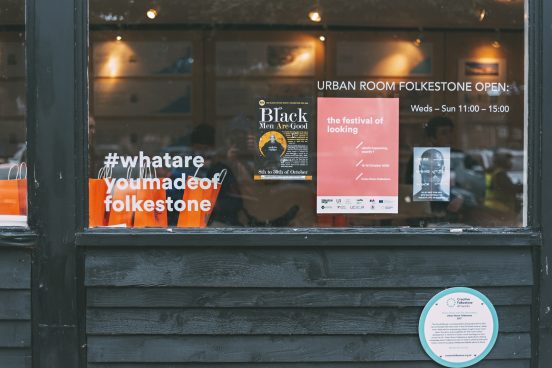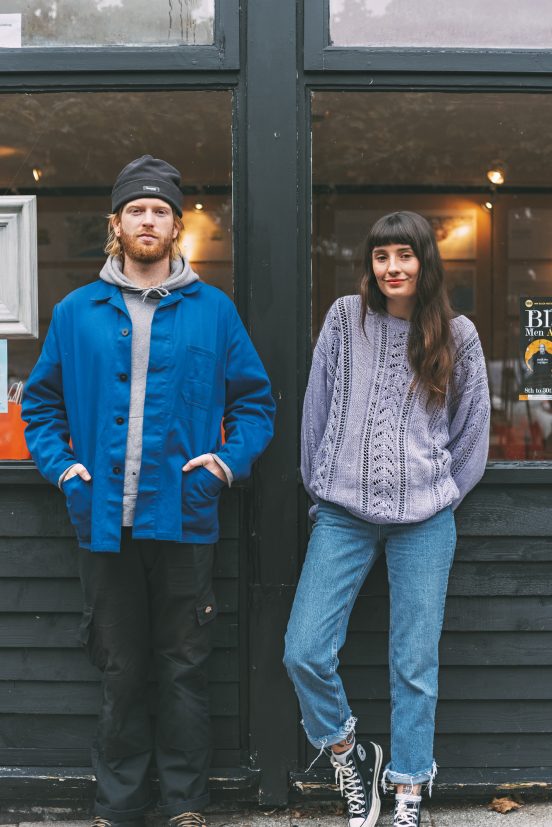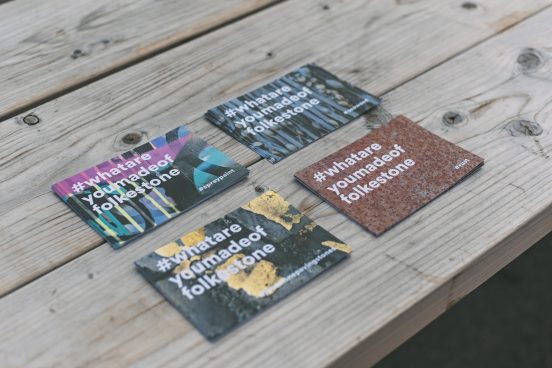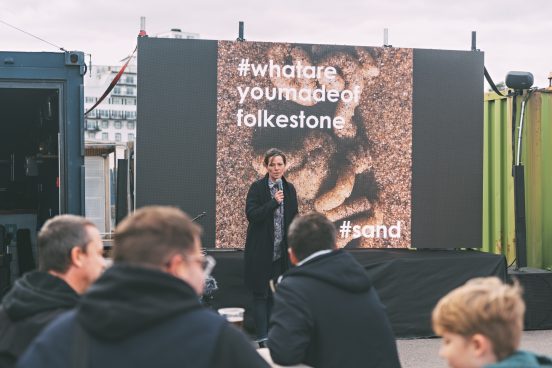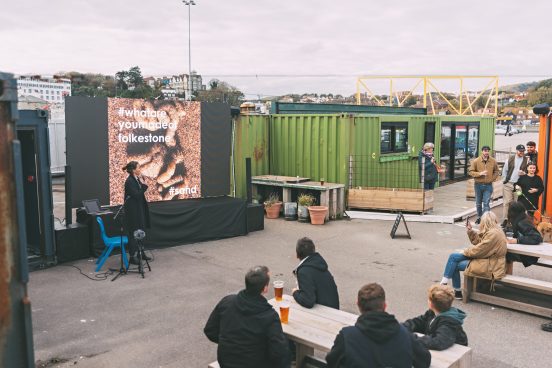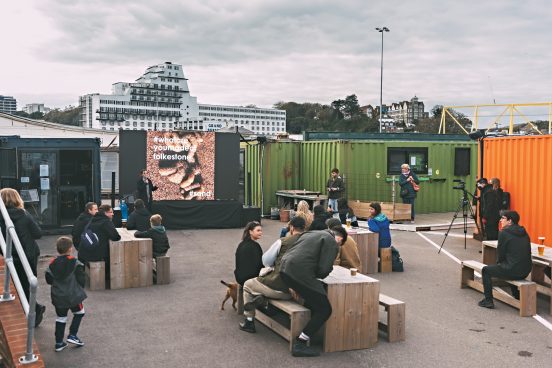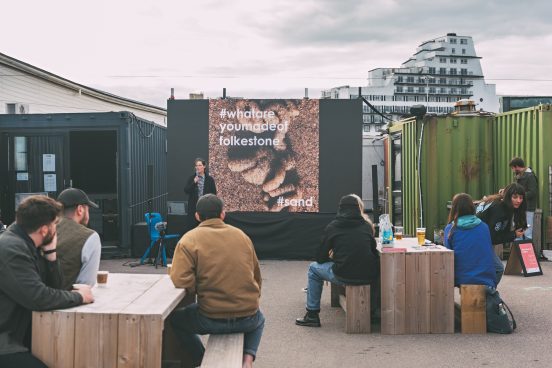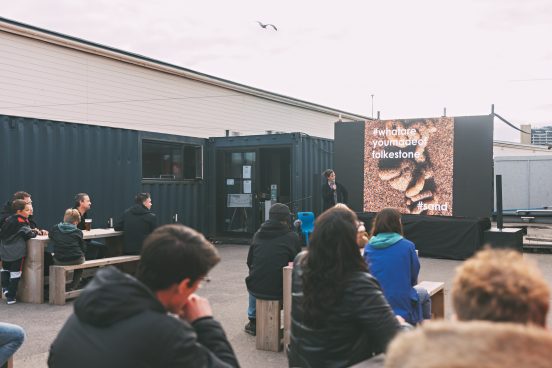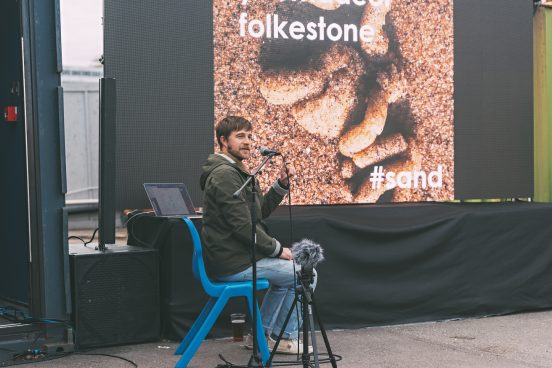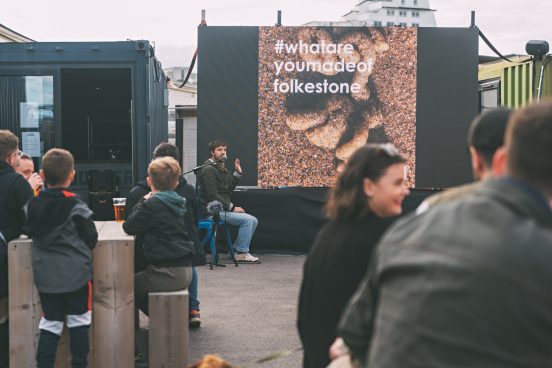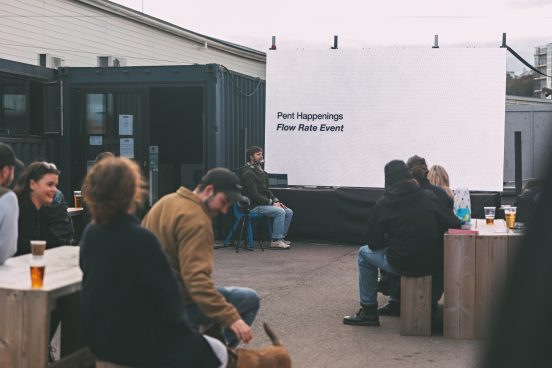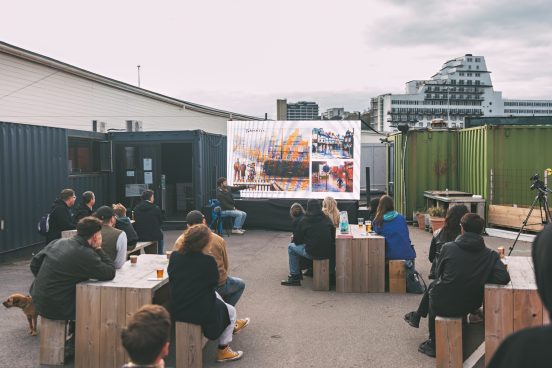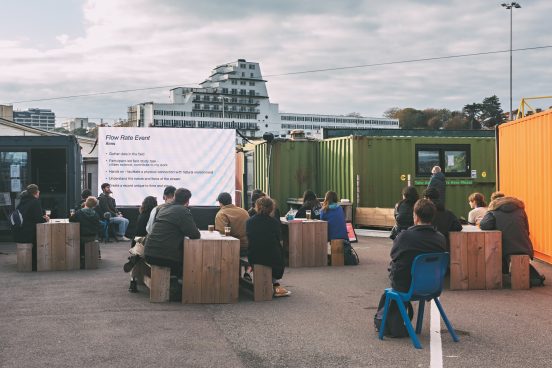What are you made of, Folkestone?
Emerging artist: Mary Conroy (EVA International, Ireland)
Residency place: Folkestone Fringe (UK)
Practice: Socially Engaged Artist
Local Artists: People of Folkestone
Curated by: Georgie Scott
For our third year MagiC Carpets projects, we wanted to work with an artist whose practice is strongly connected to the local environment and who is experienced in collaboration and co-creation with members of the community. One of our aims for the third year was to develop a project which would uncover hidden traces of change within the town, as a way to show its adaptability and resilience over time, as well as to encourage a cross-generational dialogue. This was with the hope of ultimately creating a stronger connection and understanding between the people of Folkestone and the place in which they live, to celebrate its rich and diverse landscape and to enhance the sense of belonging and togetherness. Our brief was titled ‘What’s happening, exactly?’ as we wanted to probe and explore our current situation and the issues which surround us, locally and globally.
Irish artist Mary Conroy, who was nominated by Niamh Brown at EVA International, seemed like the perfect person we were looking for as her practice is strongly influenced by the local landscape and its materials and often runs public workshops as part of the process in developing her work. We were particularly inspired by her previous project ‘Site’ (2018) commissioned by Ormston House, Limerick, in which Mary combined her research into the local building material of terracotta tiles from the Mid-Georgian period, medieval tiles and the exploration of the River Shannon by inviting members of the public to create their own tile embossed by the riverbed. These embossed tiles went on to create their own museum showing the traces of time and place. The connection between the people and place; its history, industry, landscape and how they all affect each other; is clearly presented through this project.
The intention was for Mary to come to Folkestone for a research visit in April 2020 and to develop and finalise her project with us in July 2020. Due to the pandemic, and the travel restrictions imposed as a result, this was not possible, and we had to come up with an alternative way of working together remotely. Through regular Zoom conversations we realised that because of the importance of materiality and physicality in Mary’s practice, as well as the importance of connecting with the people and landscape of Folkestone, it was going to be a challenge to fully develop and present a finished project remotely. We decided that we would take the time instead to discuss and explore Folkestone, in order to create a foundation which could be built upon next year when, hopefully, travel is permitted, and a physical residency can take place.
Over the first few weeks, conversations around connection, signalling, communication, water as a means of connection took place as potential areas of interest. We connected Mary with local sound artist and composer Craig Gell who shares these interests, and the idea of a possible collaboration was introduced which will be continued next year.
As much as Mary could explore Folkestone through Google maps and read about the town in books and research documents supplied by Urban Room Folkestone, it was still very difficult for her to get a real feel for the town – to understand its essence and atmosphere. She thought what better way to understand this than to ask the people of Folkestone to show her in their own way. Not only was this a way for Mary to gather information about Folkestone, but it was also a way to start to communicate and connect with people here. So, Mary put forward the question: ‘What are you made of, Folkestone?’ and invited people to take photographs of the fabric of the town; from the Victorian red bricks to the neon shop signs, its shingle beach to the concrete sea defences; and to share them on Instagram with the hashtag #whatareyoumadeoffolkestone.
To push the visibility of the project and to embed it physically into the town, we installed vinyl in windows of various buildings in the town. We also produced a series of postcards with four examples of contributions to the project. The idea was for these to be alternative postcards; contrasting from the traditional postcard images of beaches and deckchairs; and for people to be able to send a piece of Folkestone, a physical part of its make-up, to people elsewhere. This felt particularly poignant in a time when people are restricted to their homes and neighbourhoods during lockdown and the need to communicate and to connect with loved ones elsewhere is needed more than ever.
The contributions we have received are varied and eye-opening; from local stone, fossils, seaweed, wooden boardwalks, chalk, clouds to graffiti. It has been so wonderful to see Folkestone through the eyes of so many different people in such a variety of ways. Through looking through the photographs you start to see a patchwork of what Folkestone means to people, what people connect to, what they value and what they ‘see’ in their immediate surroundings.
These images, which were presented on a large outdoor screen during the closing event of the Festival of Looking, have created a strong foundation for Mary to work on and an abundance of inspiration for her to follow. We’re so excited to continue working with Mary next year and to see where this route of discovery leads us. What are you made of, Folkestone? To be continued.
